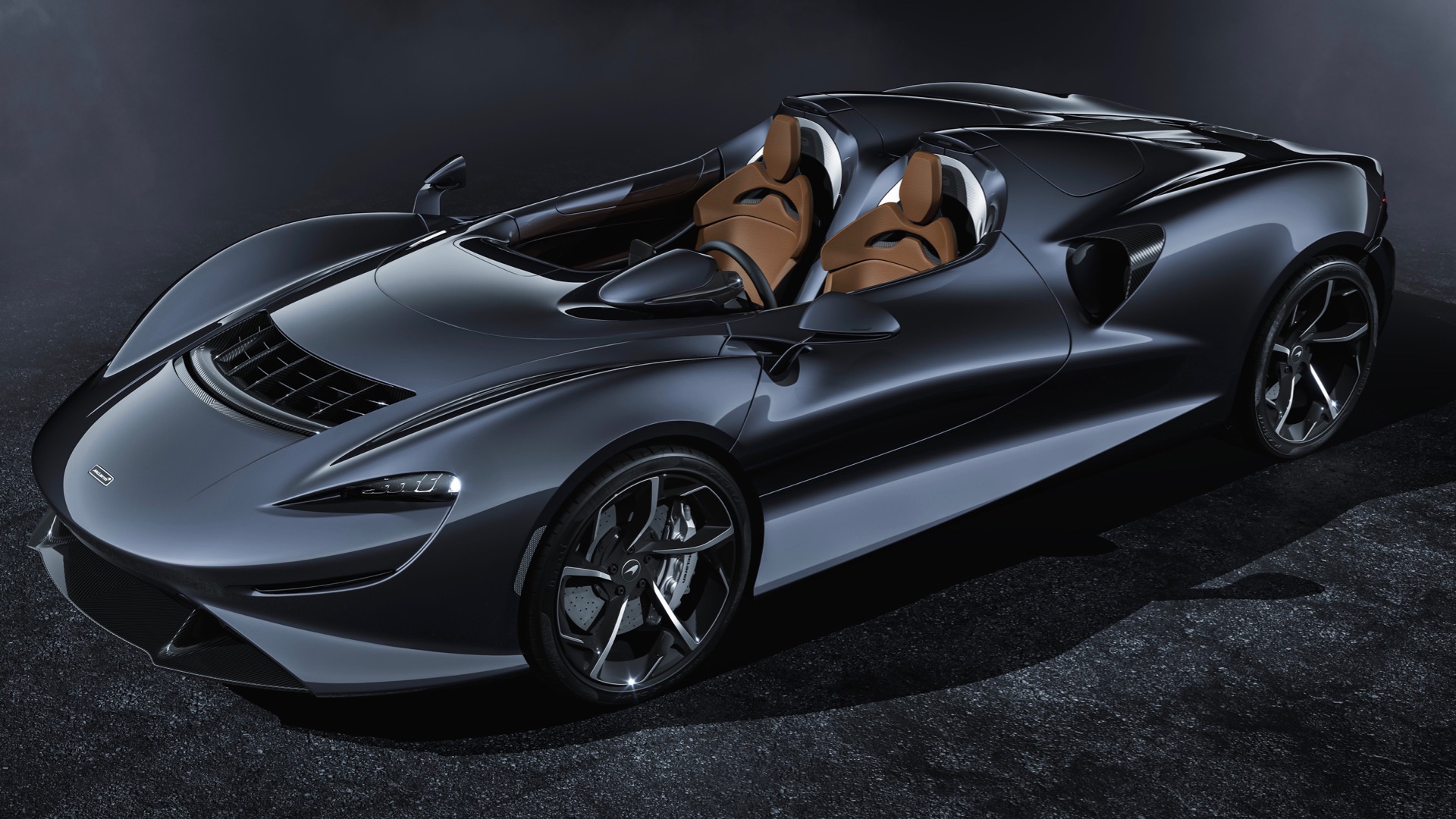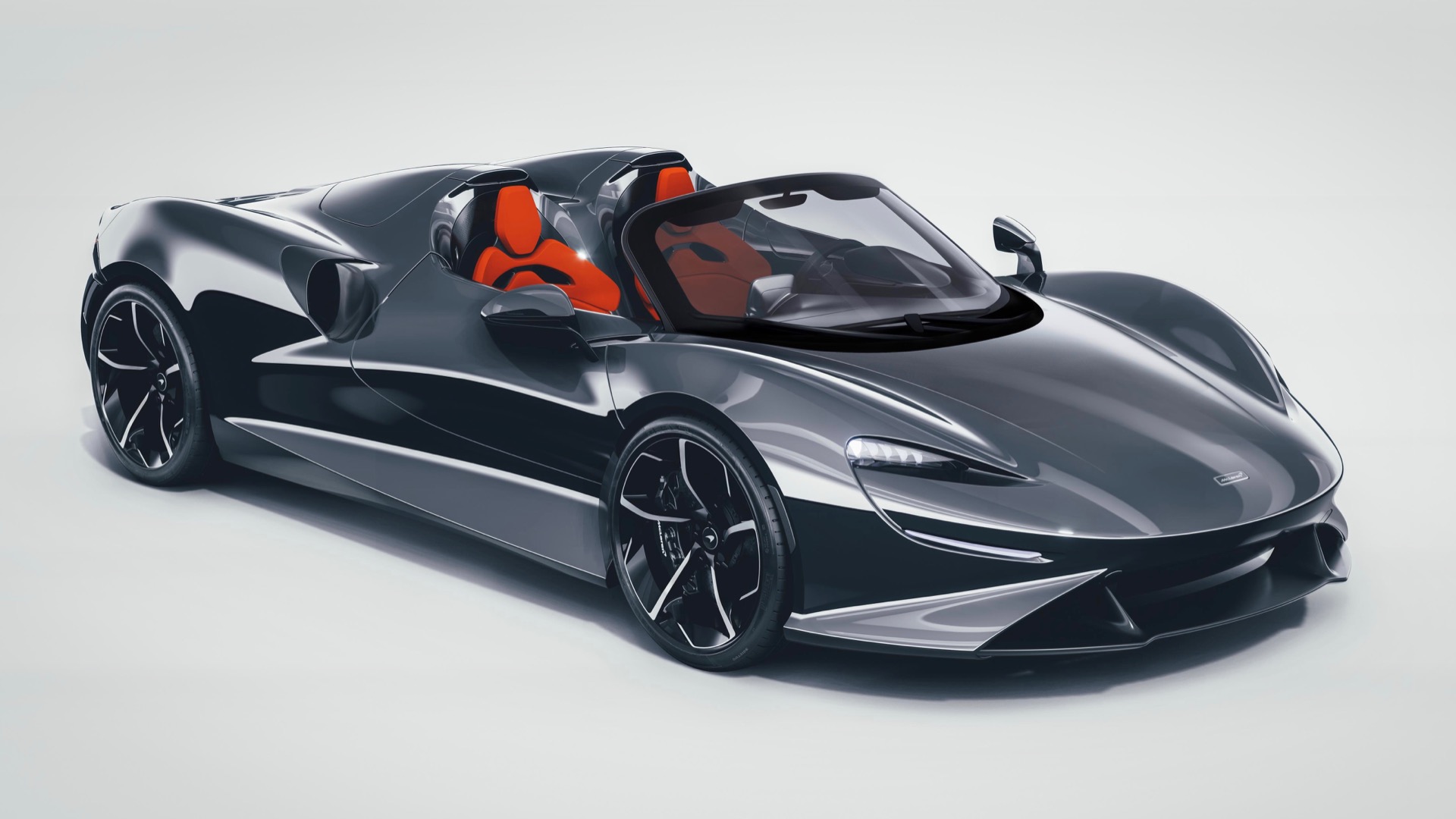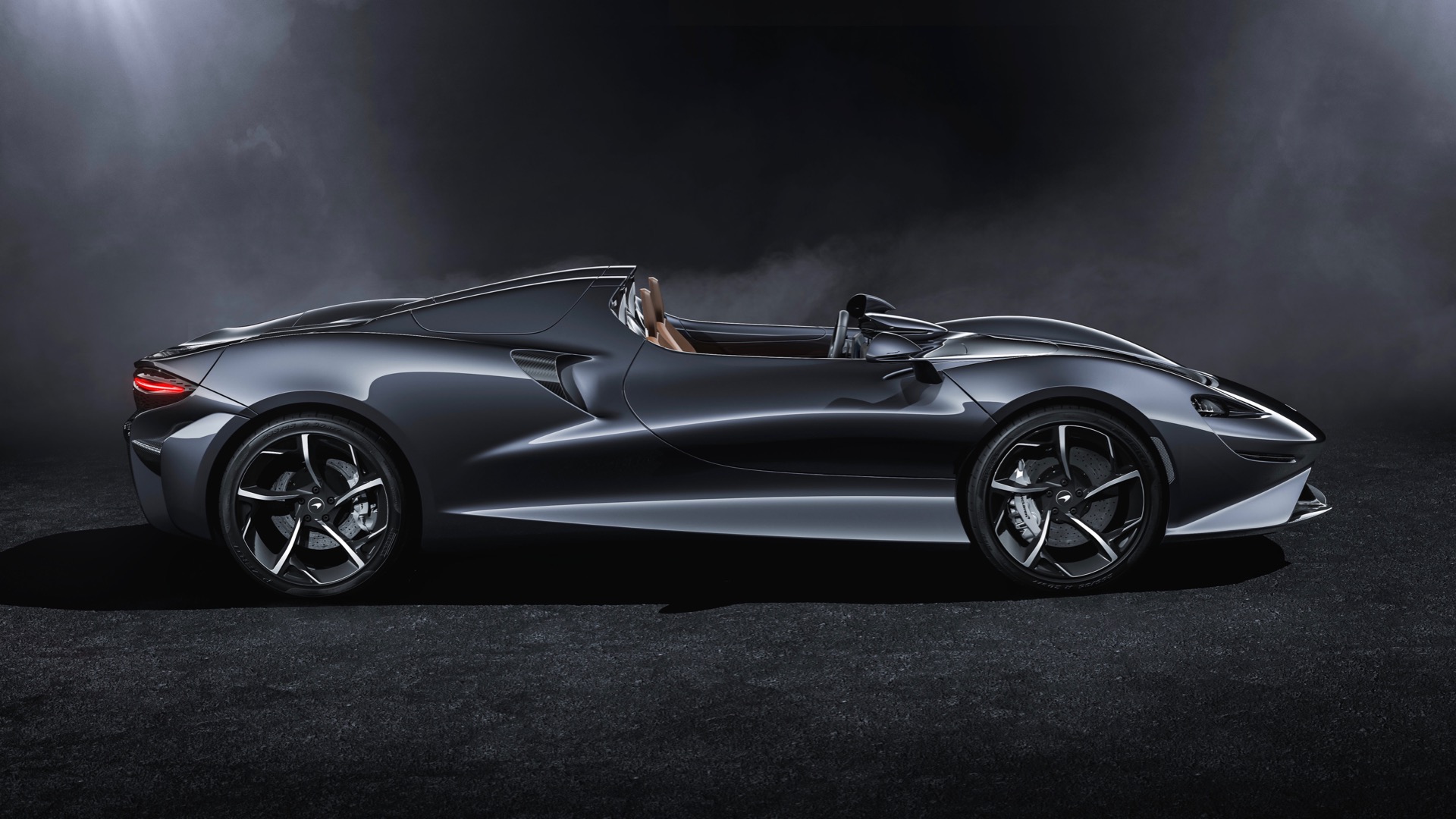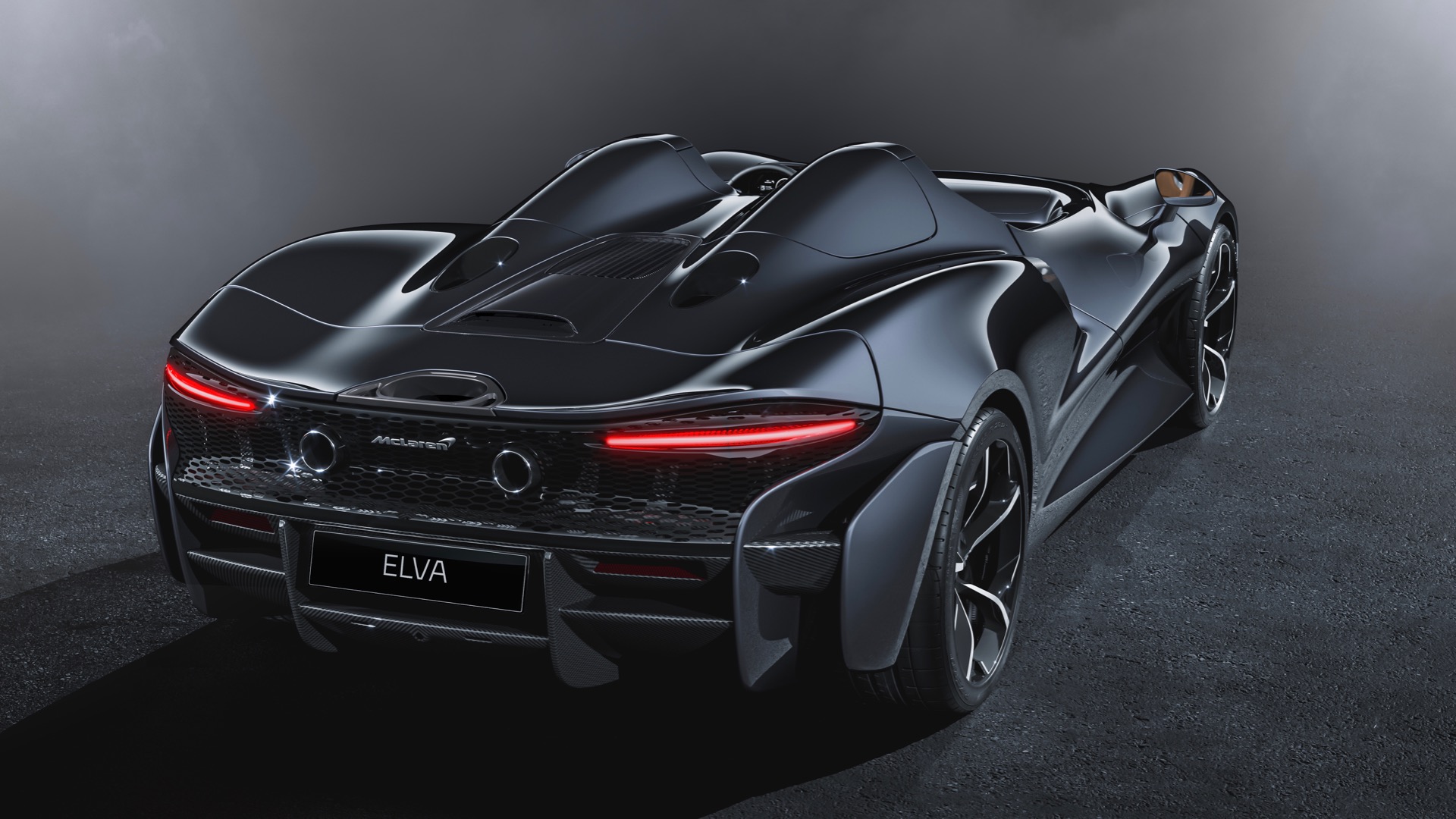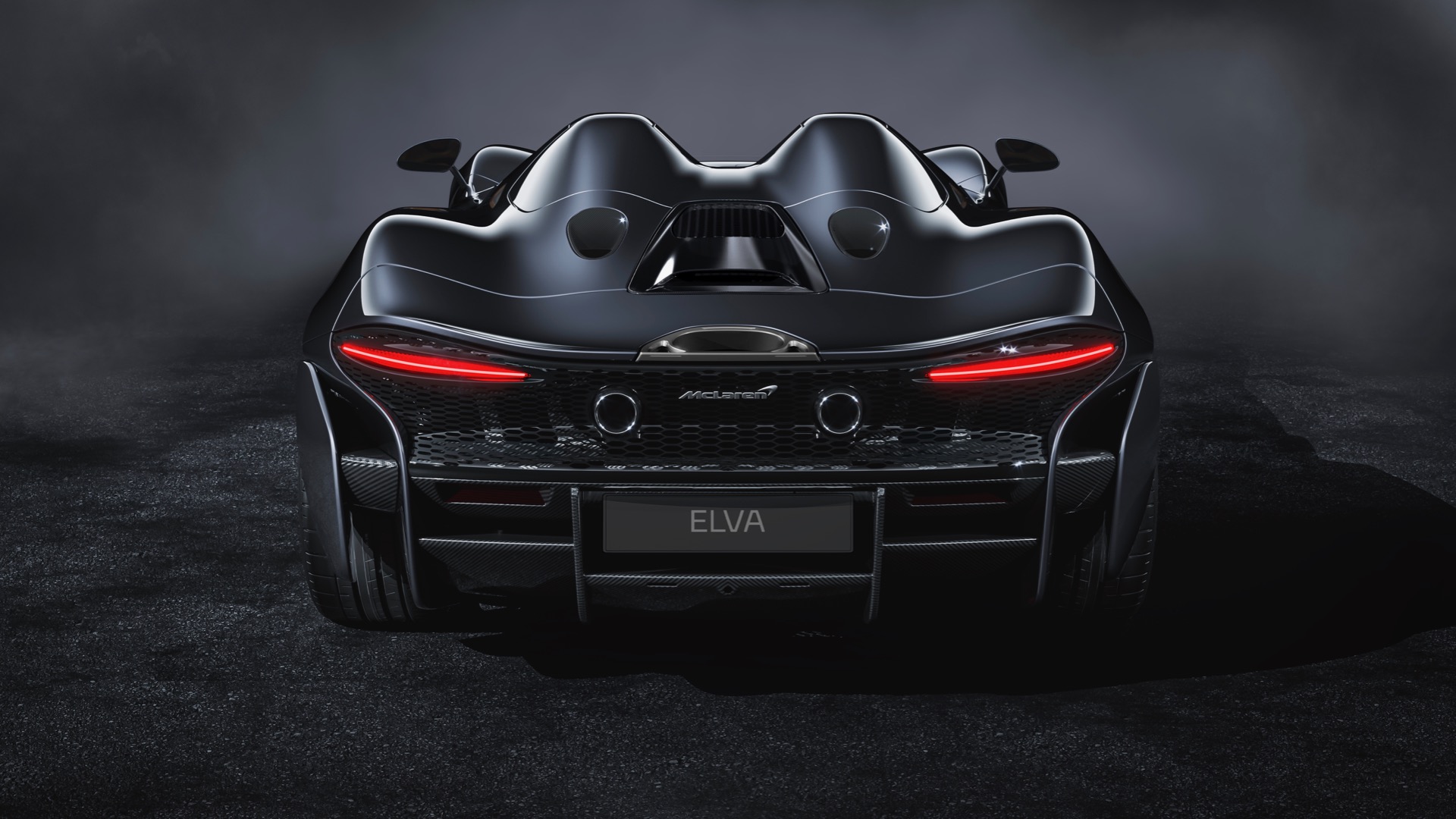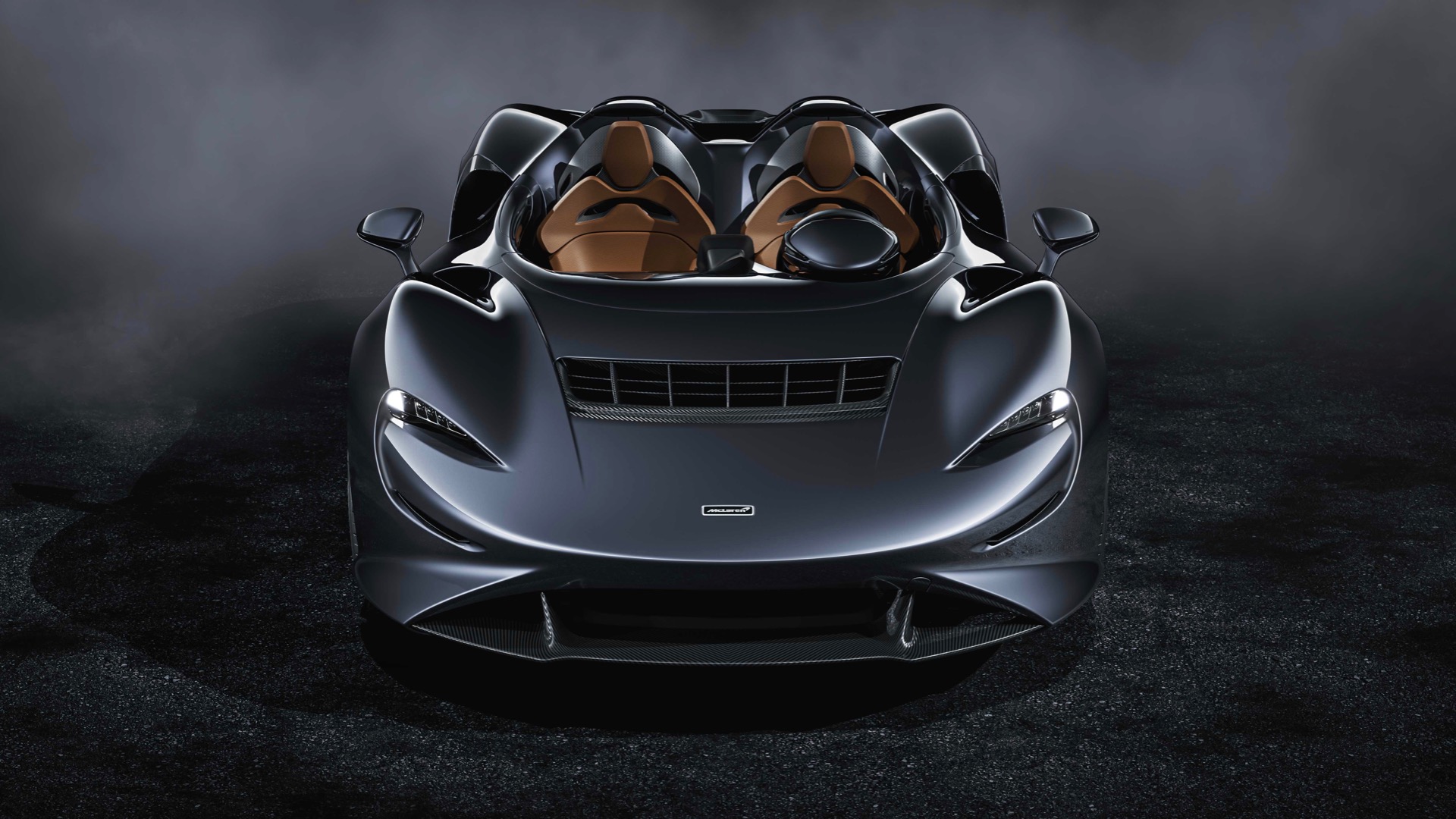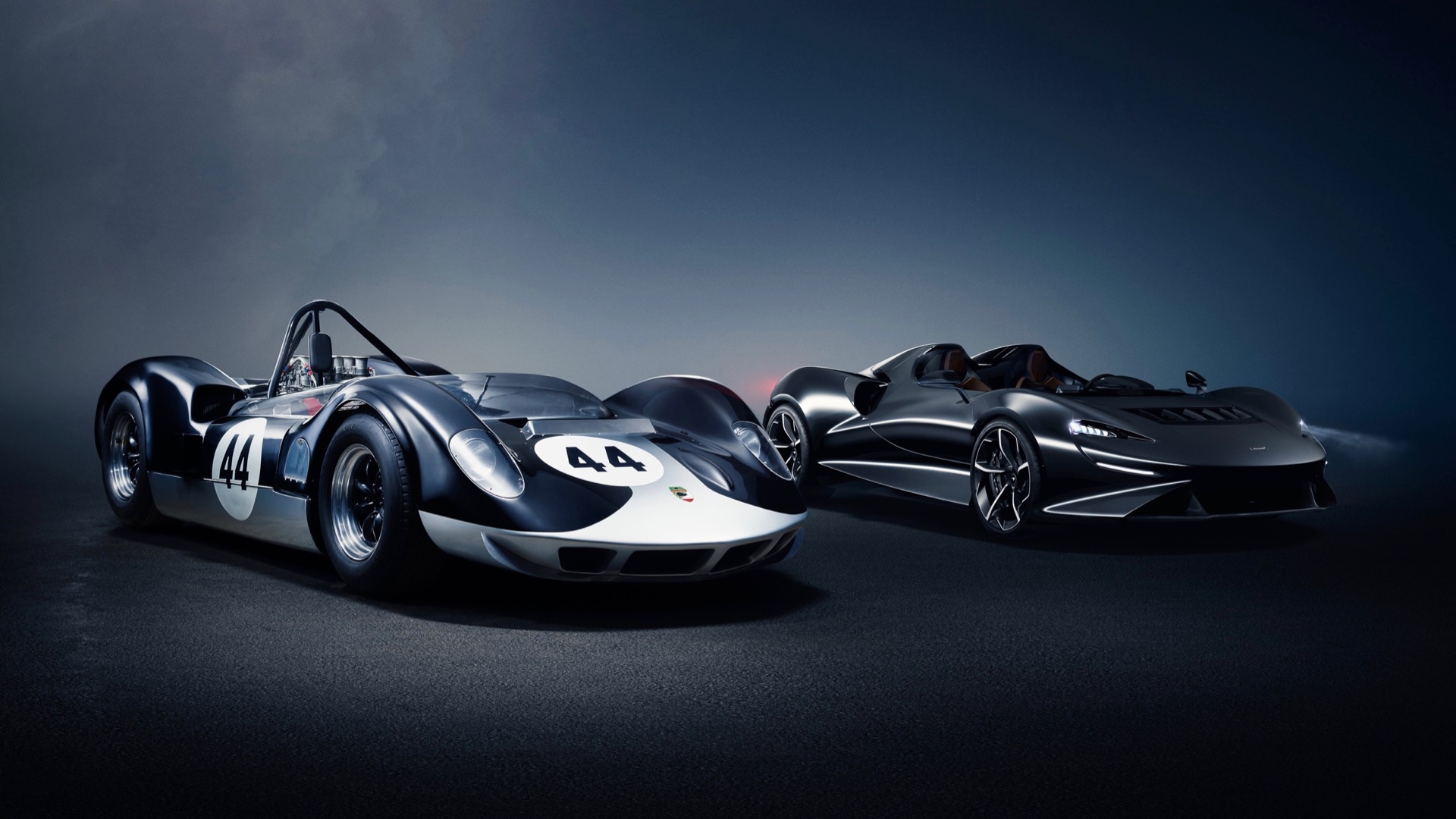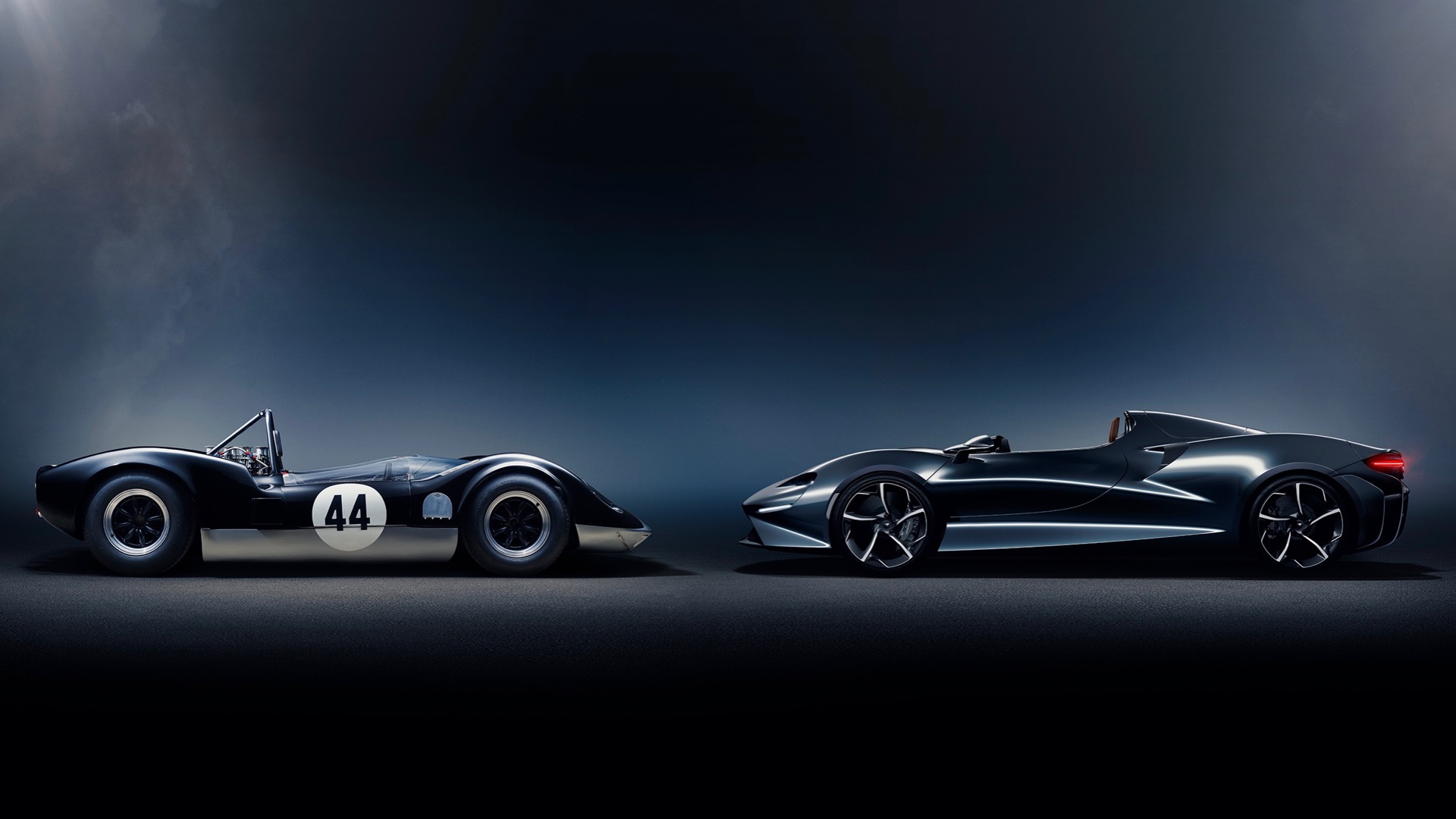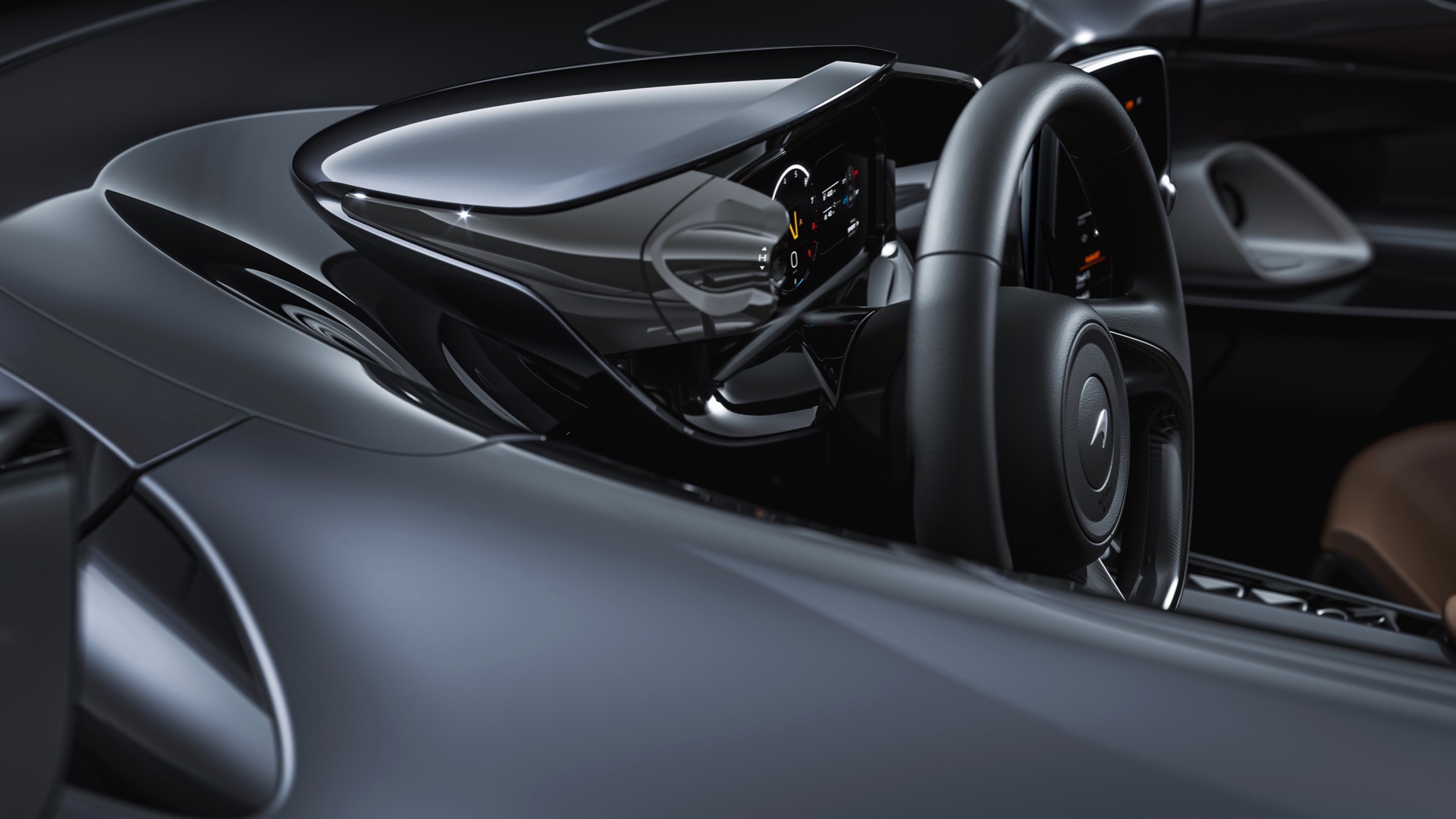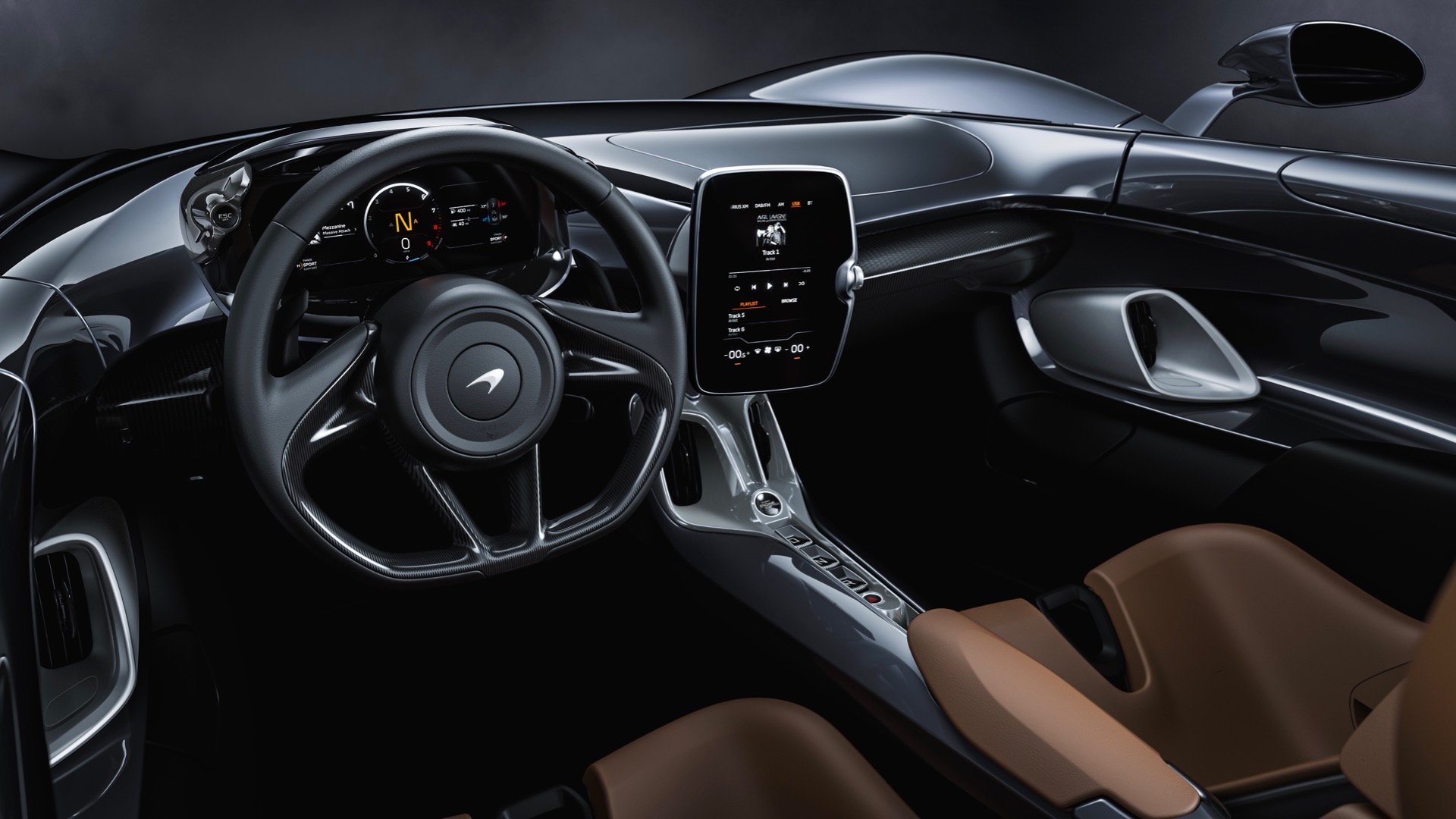The McLaren Ultimate Series is aptly named. It already includes the P1 hybrid and Senna track car, as well as the upcoming Speedtail. How can McLaren top those? With a high-performance two-seat roadster named Elva. If you want to put one of these supercars in your garage, you’ll need a lot of cash — and a lot of sunscreen.
The name Elva is derived from the French “elle va,” which translates into English as “she goes.” It’s a name plucked from McLaren’s history. In the early 1960s, McLaren built a successful car for the Can-Am series called the M1A. Race wins led to a flood of orders, but McLaren couldn’t keep up. The company contracted with another small British firm called Elva to build licensed versions of the M1A, sold under the McLaren-Elva name. Elva is no longer around, but McLaren acquired the rights to the name for its new supercar.
The modern-day Elva draws inspiration from the classic race car, with a low-slung shape, open cockpit, and engine air intakes at the top of bulging rear fenders. Under the skin, the Elva is a 21st-century design. Like all other McLaren supercars, it’s built around a carbon fiber tub. The bodywork is carbon fiber as well, and McLaren reduced the thickness of the material — to just 1.2 millimeters in some areas — to further cut weight. McLaren also devised a system that directs air around the cockpit, reducing the harsh wind buffeting that often occurs when driving at high speeds in an open car.
The Elva is powered by the same 4.0-liter twin-turbocharged V8 used in the McLaren 720S and Senna. In the Elva, this engine produces 804 horsepower and 590 pound-feet of torque. McLaren claims the Elva will do zero to 62 mph in under three seconds, and zero to 124 mph in 6.7 seconds, but didn’t mention a top speed.
When it’s time to slow down, the Elva relies on sintered carbon-ceramic brake rotors. These take much longer to make than the already-exotic carbon-ceramic rotors used in other McLaren supercars, but the automaker claims the material is both stronger and more heat resistant. This allows the front brakes to be smaller, which reduces weight, according to McLaren. It’s also easier to keep these brakes cool, McLaren claims, lessening the need for brake ducting and shaving off additional weight.
Just 399 Elvas will be made, with deliveries expected to begin toward the end of 2020. The Elva is priced at $1.69 million, making it the second most expensive McLaren. The upcoming Speedtail has a $2.25 million price tag, as well as a claimed output of 1,035 hp and a 250-mph top speed. That should make the Speedtail the ultimate car in McLaren’s Ultimate Series — until McLaren makes something even crazier.
